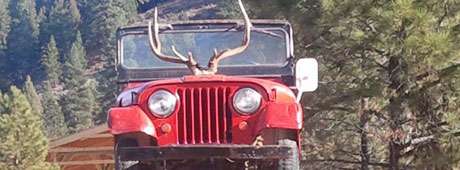No products in the cart.
Featherville–Spotlight

Instant Fame for the Visitor in Room One
Story and Photos by Amy Larson
I called the Featherville Motel on a Monday morning in August before driving up to explore the little community in the midst of the Boise National Forest. “They’re shutting off the power within the next few hours,” I was told, “and they’re not going to be letting anyone in.”
Featherville wouldn’t be happening for me that day, and considering the grim fire reports, I wondered if there would be a Featherville left to see in the future. The previous summer, residents were told to evacuate when the Trinity Ridge Fire burned dangerously close to the community. Packed vehicles rolled through town as drivers left at the advice of the county sheriff, while others chose to push their luck and stick around. Bustling with firefighters, Featherville business increased, selling food and drink as crews created backfires and employed other precautions to protect properties. The fire was dubbed the worst Idaho had seen in years.
This summer, as dense smoke from the rapidly moving, worse-than-the-year-before Elk Complex fire filled the skies, residents must have been thinking, What, again? The fire made national headlines. Once more, locals were encouraged to leave and by mid-August, I’d heard that thirty-eight homes and forty-three outbuildings had already been lost. Only through untiring efforts were many other homes and much more heartache spared.
Months passed before I could visit, but in the meantime, I tried to find out what I could about Featherville. Its inception followed the discovery of gold in 1862 at a place called Rocky Bar. The bumpy road from the strike led ten miles south into what is now Featherville, originally called Junction Bar, when it was used as a stage station for those heading to Rocky Bar. It’s believed that Featherville was named after the Feather River by miners who set up camp up at Rocky Bar around 1864. Things got cooking in the 1870 and ‘80s, but cooled down by the 1900s. Elmore County is still considered to be a prospector’s paradise, rippling with placer gold areas.
This content is available for purchase. Please select from available options.
Purchase Only
Purchase Only


One Response to Featherville–Spotlight
Mike Scirocco -
at
Very interesting, thanks. Do you hve any idea how the Feather river was named?